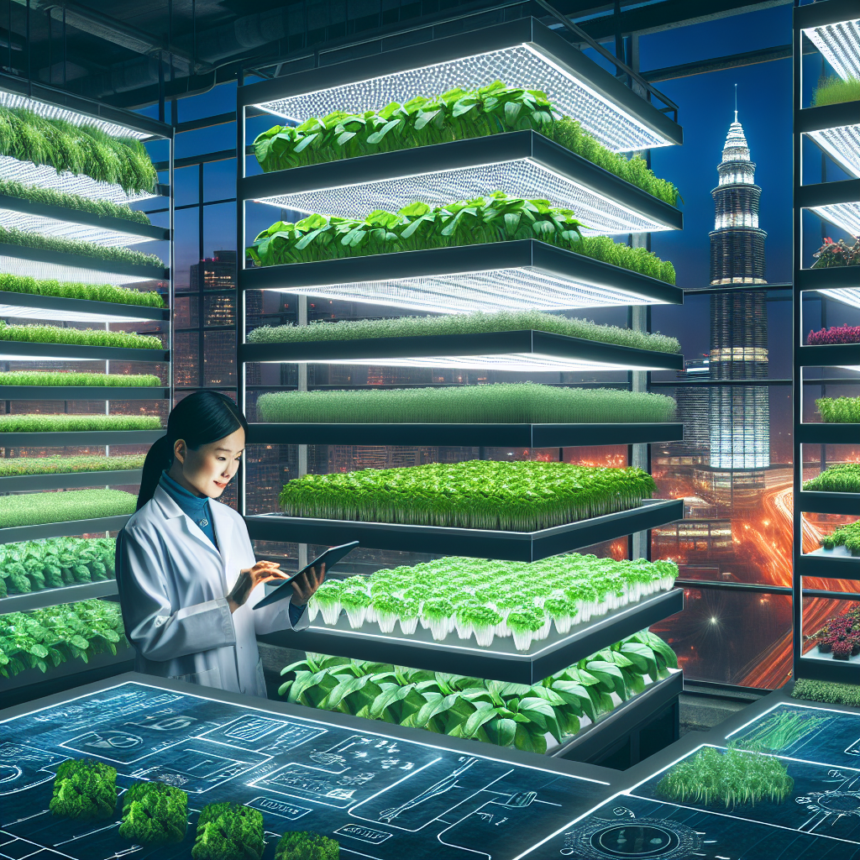As the global population continues to soar, experts predict that we will need to produce up to 70% more food by 2050 to meet the demands of nearly 10 billion people. Traditional agricultural practices, which often rely on vast expanses of arable land, face increasing challenges from urbanization, climate change, and unsustainable farming practices. Amidst these challenges, vertical farming has emerged as a promising solution poised to revolutionize our food supply.
What is Vertical Farming?
Vertical farming is an innovative agricultural practice that involves growing crops in vertically stacked layers. Utilizing controlled-environment agriculture (CEA) technology, it employs hydroponics, aeroponics, and even aquaponics to nourish crops without the need for traditional soil-based farming. The core concept is to maximize space and resource efficiency, allowing crops to be grown in urban settings, reducing the carbon footprint associated with transporting food over long distances.
Advantages of Vertical Farming
-
Space Efficiency: Vertical farms can be integrated into urban landscapes using warehouses, rooftops, or repurposed buildings, allowing for food production closer to where it’s consumed. This not only saves land but also helps in utilizing areas that would otherwise be non-arable.
-
Resource Conservation: Vertical farming uses significantly less water compared to conventional agriculture—up to 90% less. Hydroponic systems recirculate water, ensuring minimal waste. Additionally, there is no reliance on pesticides or herbicides, resulting in cleaner produce and a reduced environmental impact.
-
Year-Round Production: With controlled environmental conditions, vertical farms can produce crops throughout the year. This constant supply mitigates the risks associated with seasonal farming, ensuring food availability regardless of weather disturbances.
-
Nutrient-Rich Crops: Vertical farms can optimize growing conditions, leading to nutrient-dense crops. By fine-tuning light, water, and nutrient delivery, farmers can enhance flavor and health benefits, catering to the growing demand for organic and nutritious food.
- Reduced Food Miles: By growing food right in urban areas, vertical farms significantly reduce transportation requirements. This diminishes carbon emissions associated with long-haul deliveries and ensures fresher produce for consumers.
Challenges and Considerations
Despite its advantages, vertical farming does come with hurdles. High initial investment costs for technology and infrastructure can be a barrier for many farmers. Energy consumption, particularly for lighting and climate control, can sometimes detract from the environmental benefits if not managed properly. Moreover, there may be a limited range of crops that can thrive in these systems, although this is changing as technology progresses.
Future of Vertical Farming
As technology continues to evolve, vertical farming may become an essential pillar of global food security. Innovations in artificial intelligence, IoT (Internet of Things), and renewable energy sources will likely optimize operational efficiency and lower costs over time. Startups and established companies alike are increasingly investing in this sector, trying out various models—from small-scale urban farms to larger commercial operations capable of feeding thousands.
Furthermore, as consumer awareness of food provenance and sustainability grows, vertical farming aligns with these values by providing local, pesticide-free produce. This trend is important for both environmental sustainability and public health.
Conclusion
The challenges facing traditional agriculture in a rapidly changing world underscore the need for innovative solutions. Vertical farming stands out as a pioneering approach that not only addresses pressing food supply issues but does so in an environmentally responsible way. With ongoing advancements in technology and a focus on sustainable practices, vertical farming is poised to revolutionize agriculture and shape our future food supply.
FAQs
What types of crops can be grown in vertical farms?
Vertical farms can grow a variety of crops, including leafy greens, herbs, and some fruits. Innovations are expanding the range of viable crops, including strawberries and even tomatoes.
Is vertical farming economically viable?
While startup costs can be high, advancements in technology are making vertical farming increasingly economically viable. Operational efficiency and demand for locally grown produce can contribute to profitability.
How does vertical farming impact the environment?
Vertical farming can have a positive environmental impact by reducing water usage, eliminating pesticides, and cutting down on transportation emissions due to proximity to urban areas.
What technology is involved in vertical farming?
Vertical farms use hydroponics or aeroponics systems, LED grow lights, climate control systems, and advanced sensors and IoT devices to monitor and optimize growing conditions.
Are there any downsides to vertical farming?
Challenges include high initial costs, energy consumption, and the current limitations on the diversity of crops that can be grown effectively. However, ongoing developments in technology are addressing these issues.











